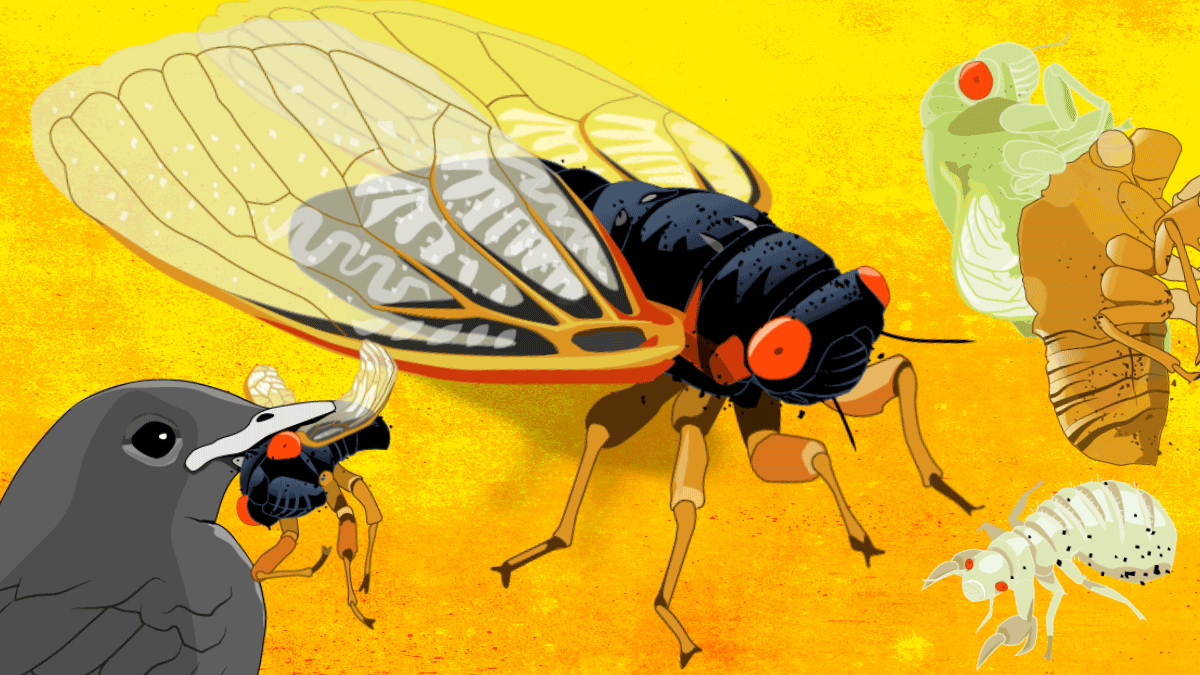
More than a trillion noisy, inch-long cicadas are set to emerge from underground this spring to embark on the final leg of their lifetimes, in a massive co-emergence that hasn't been seen in more than 200 years.
Cicadas that are part of both a 13-year and a 17-year brood will emerge at the same time this spring. It will be the first time since 1803—when Thomas Jefferson was President—that these particular broods simultaneously tunnel up from their burrows to find a mate and make way for the next generation of cicadas.
Cicadas will be visible in a number of states including Iowa, Illinois, Georgia, Tennessee, and others. But you don't need to worry that your neighborhood will be inundated with a greater number of cicadas than in past years; the two broods live across different regions—Brood XIII in the north and Brood XIX in the south— according to the University of Connecticut, meaning people are unlikely to witness both broods at the same time.
Here’s an animated look at what will happen in the upcoming emergence of Brood XIX and Brood XIII.
Cicada nymphs emerge
Once the soil temperature near the cicadas’ home reaches about 64 degrees Fahrenheit or greater, the insects begin to climb through their exit holes.
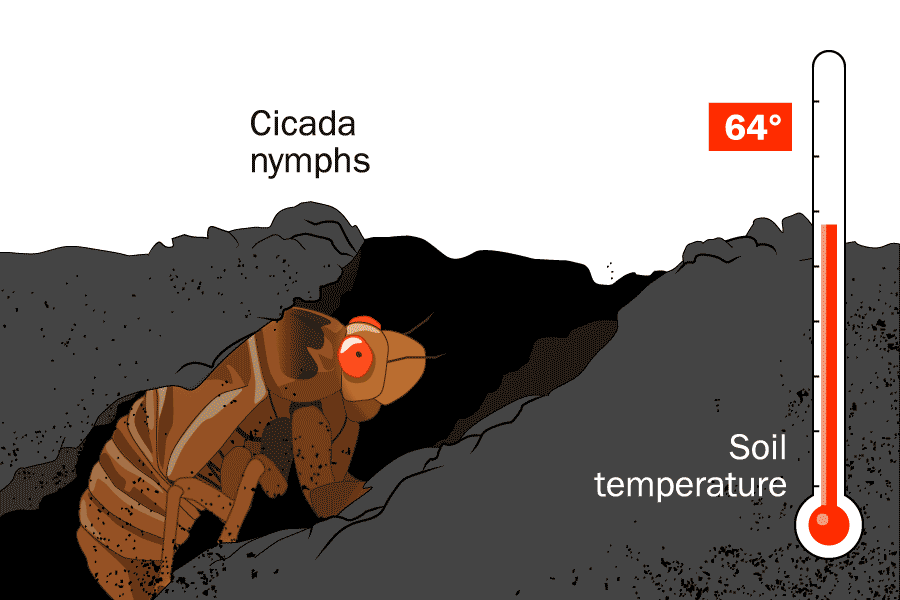
Time to molt
That same night, cicadas transform from nymphs, or their sexually immature phase, to adults. The cicadas molt into their new form by shedding their final exoskeleton. (The species already underwent this shedding process four times while living underground, according to Arizona State University.)

Their exoskeleton hardens
Cicadas must keep a low profile in the hours after they molt to avoid being eaten by predators while their new exoskeleton hardens. Afterwards, they begin looking for mates to reproduce in a ritual that will take place six to 10 days later.

Buzzing calls for mates
Male cicadas are known for their deafening mating call, which in 2021 was reported to reach as high as 90 to 100 decibels, according to the Centers for Disease Control and Prevention (CDC). The sound is caused by the vibration of their tymbal, an organ that rests on the side of their abdomen. Since the cicadas emerge all at once, their sound is hard to miss, but the CDC advises folks not to fret. The sound does not cause hearing loss because other factors, like noise duration and exposure distance, have to be taken into account.
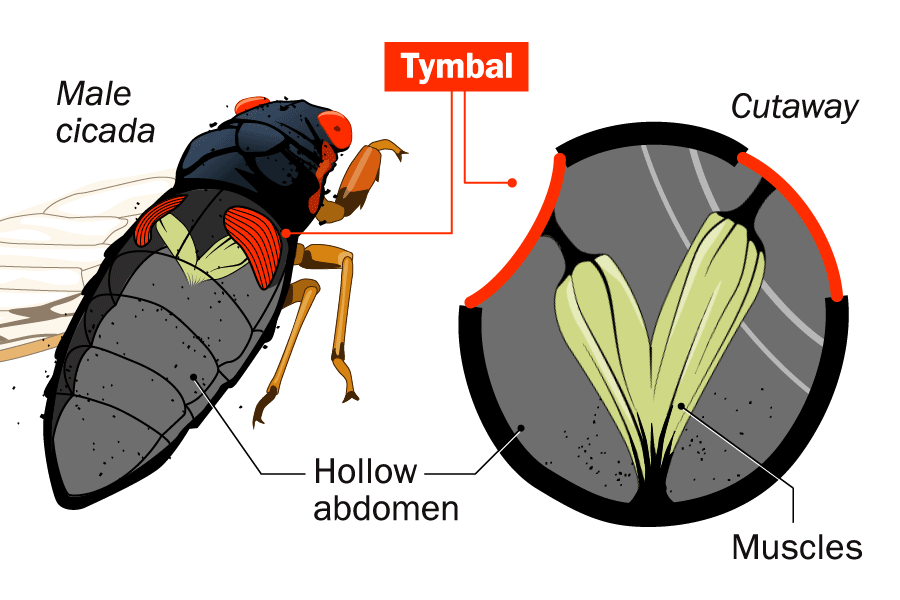
Predators feast on the insects
A number of predators—birds, bears, fish, raccoons, turtles, and even some humans—love to eat cicadas, which are in the same family as the stink bug. While many will die as a tasty snack, the number of cicadas set to emerge is so large that predators will not make a significant dent in their population.
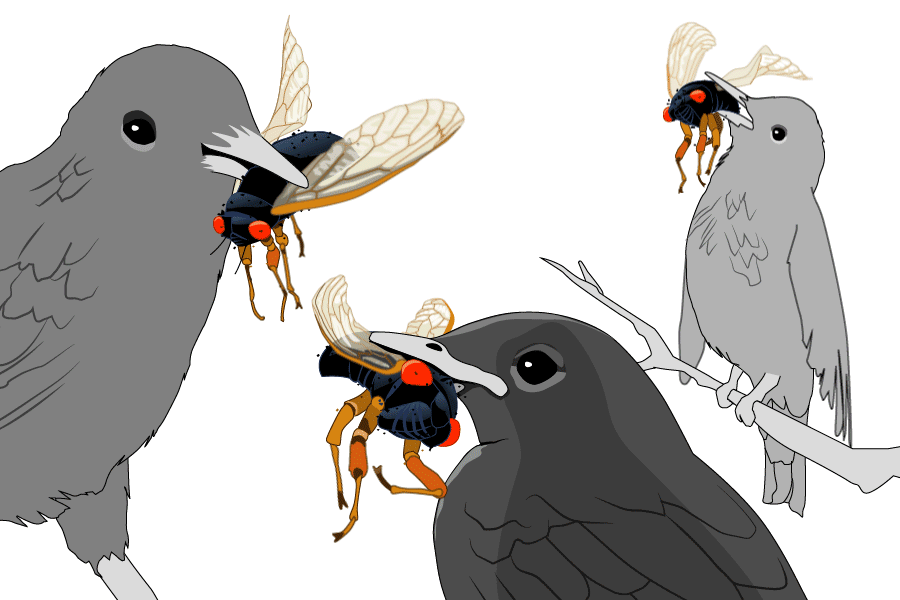
Females lay their eggs
After mating, female cicadas use their ovipositor—a spear-like structure—to slice into small trees, shrubs, and even grapevines. It allows the insect to make small slits into the twigs or branches and lay nests of tens of eggs at a time. (This process does not cause any serious damage to the plant.) Females lay anywhere from 400 to 600 eggs before they begin to die and their bodies become fertilizer for the soil around them.
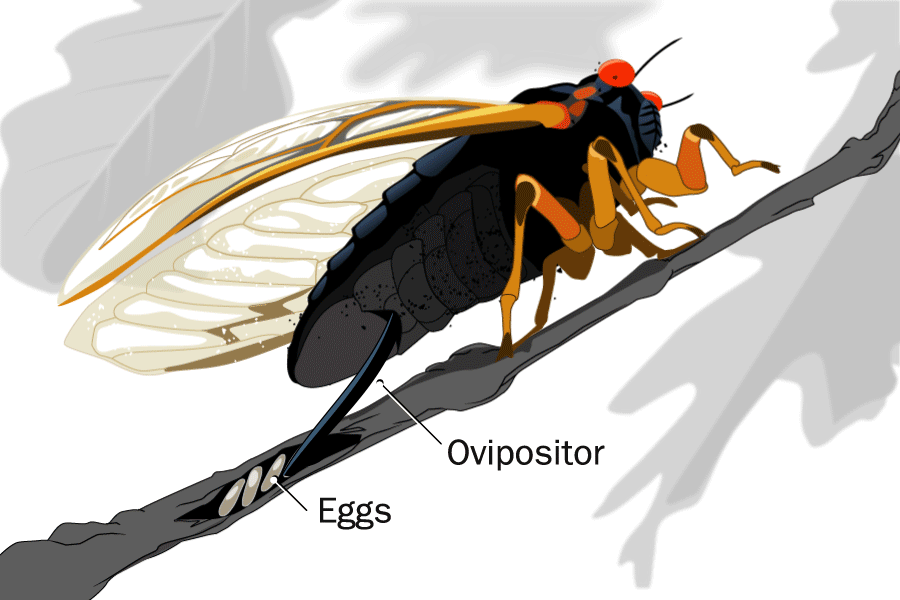
From the eggs, nymphs hatch
Six to eight weeks after the eggs are laid, the nymphs hatch and fall to the earth. The tiny nymphs then dig to the plant’s roots where they will live for the next 13 or 17 years, depending on the type of brood.
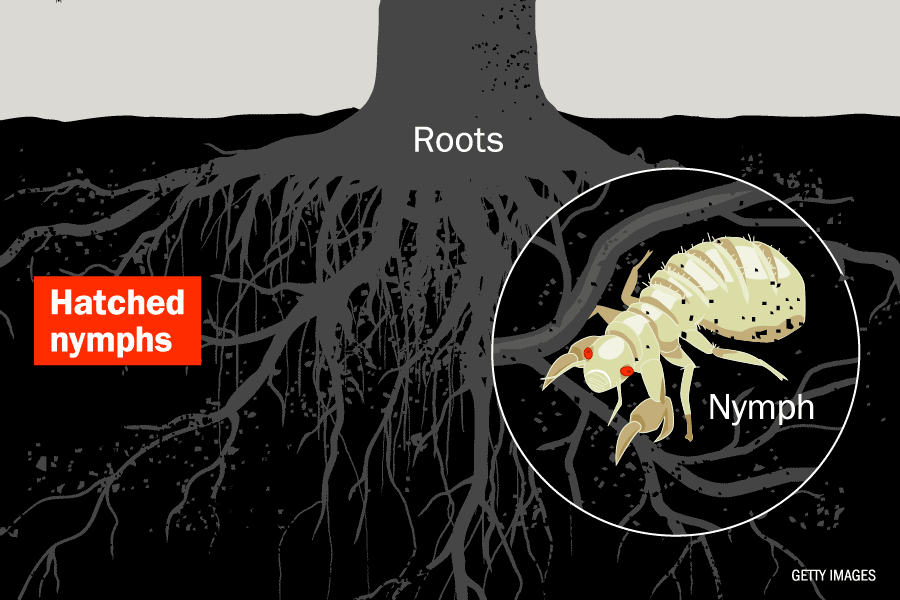
It’s a regional affair
Periodical cicadas will emerge across more than 10 states this spring, but their habitat spans across the eastern and midwestern U.S. Brood XIX is geographically the largest of all broods, living from Maryland to Georgia and Iowa to Oklahoma. The next emergence will happen in 2025, with Brood XIV.

More Must-Reads from TIME
- Donald Trump Is TIME's 2024 Person of the Year
- Why We Chose Trump as Person of the Year
- Is Intermittent Fasting Good or Bad for You?
- The 100 Must-Read Books of 2024
- The 20 Best Christmas TV Episodes
- Column: If Optimism Feels Ridiculous Now, Try Hope
- The Future of Climate Action Is Trade Policy
- Merle Bombardieri Is Helping People Make the Baby Decision
Write to Lon Tweeten at lon.tweeten@time.com